Terrain and Creep Paths in DotA
October 27, 2025Elken, Korneeey
Terrain of the Final DotA Allstars Map: Visuals and Functionality
Before DotA fully transitioned into the Dota 2 format, IceFrog left the community with the final version of the DotA Allstars map — 6.83d, released in 2015. This map became a symbolic endpoint in the evolution of the original DotA on the Warcraft III engine. In this article, we examine one of the most underrated yet critically important aspects of the map — its terrain. It deserves analysis from two perspectives: visual and functional. The former shapes aesthetic perception, while the latter directly affects game mechanics and balance. Although visuals are important — especially in the era of custom models and effects — functionality still takes precedence in the MOBA genre.
Visual Design: A Legacy from 2004
The visual style of the map is, to put it mildly, outdated. IceFrog remained committed to the classic aesthetic established in the early versions of DotA. This decision is understandable — stability and familiarity are important to the community. However, by around 2010, as the Warcraft III mapping scene evolved, expectations for design quality also increased.
One example of a visual flaw is the slope from the Scourge fountain toward the Frozen Throne — it appears awkward, with a sharp drop in the center and gentle slopes on the sides.
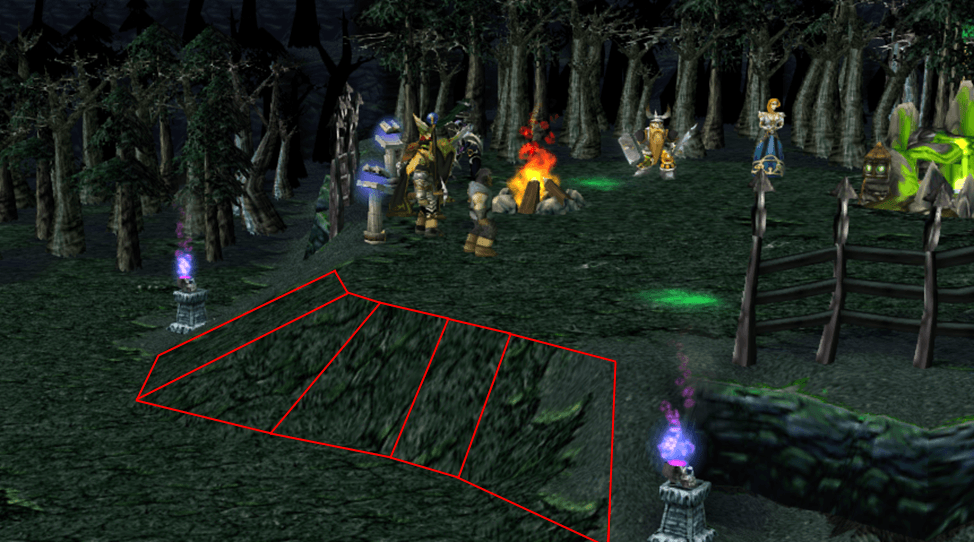
Another example is a mysterious "hole" in the terrain, serving no visual or functional purpose. In modern game design, such elements are either explained through lore or removed as bugs. Here, it remains a silent artifact that raises questions.
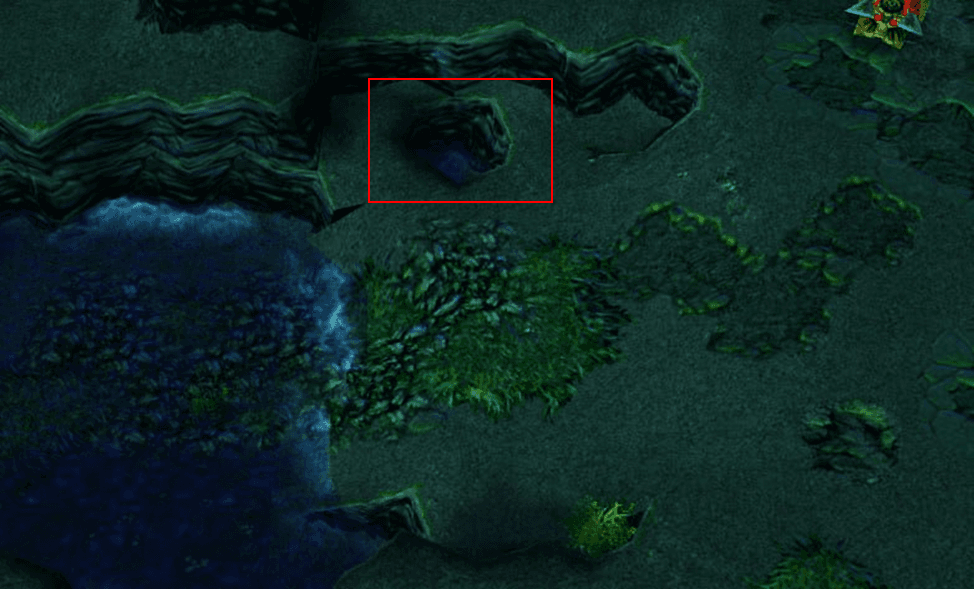
Overall, the map contains several visual inconsistencies, though most are subtle enough to go unnoticed by the average player. Still, they contribute to a general impression that falls short of ideal.
Functionality: Where Terrain Affects Balance
The functional side of the terrain is far more important, as it directly affects gameplay. In DotA, this includes everything from creep pathing to vision mechanics and high ground miss chances.
Terrain and Balance
A clear example of terrain affecting balance is the placement of runes. The top rune is closer to the center of the map, giving the midlaner with a bottle a noticeable advantage by allowing faster returns to lane. In evenly matched games, this can create a significant edge.
This is evident even without precise measurements — the distance from the midlane center to each rune differs by at least 1.5 times.
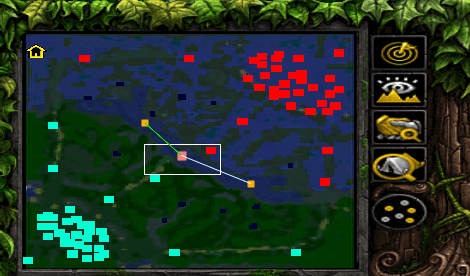
Elevations and Pathways
The river exits at midlane differ between Sentinel and Scourge. The Sentinel side is shifted upward and angled more steeply along the Y-axis.

Additionally, some forest paths are so narrow that a single hero can completely block passage. In such cases, even a weaker hero can gain an advantage simply through positioning.
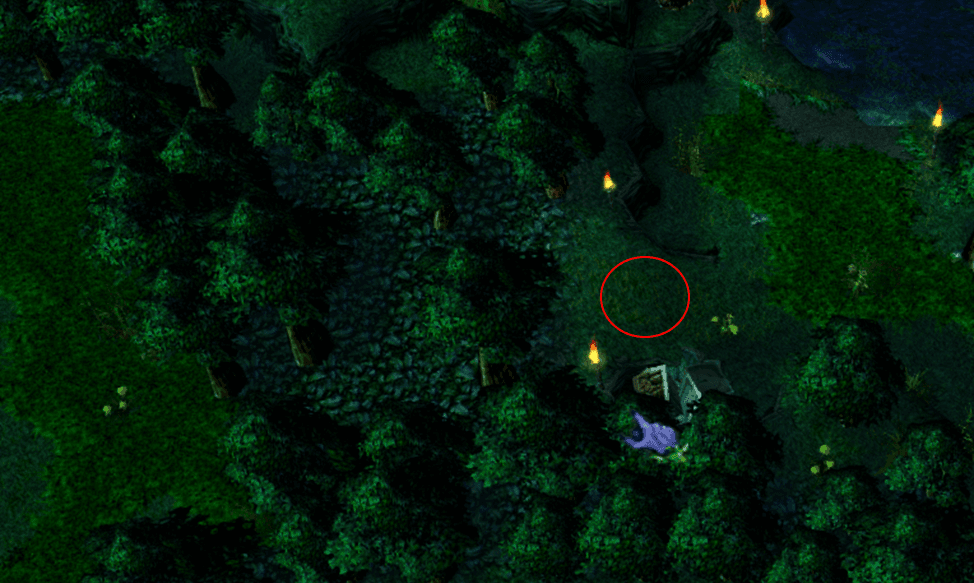
Creep Pathing Map
Creep paths are defined by a sequence of regions (waypoints) that units must pass through. Upon reaching each region, creeps receive a new movement command toward the next one. However, the map contains very few such points, which often leads to suboptimal routing: creeps tend to hug trees, terrain edges, or other obstacles.
A clear example is how creeps behave after the Tier 3 tower near the Scourge base is destroyed. Once it falls, creeps are ordered to move toward the Frozen Throne, but the first object in their path is the ziggurat, not the barracks. This gives the defending team time to hold the line despite losing the tower. Such behavior can significantly affect the outcome of the game, especially in late stages when each wave of creeps carries strategic weight.
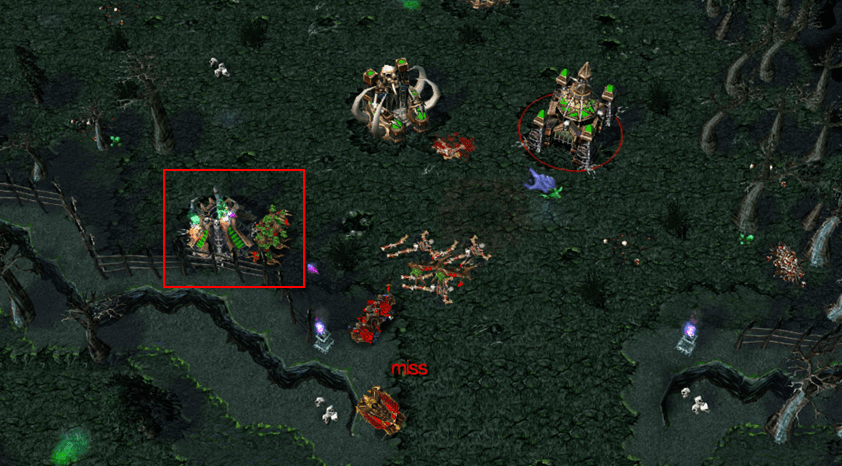
Conclusion
The terrain of the DotA Allstars map is a product of Warcraft III’s engine limitations, deliberate design choices, and historical legacy. It retains a recognizable style shaped over years of development and reflects a philosophy focused on stability and preserving the map’s familiar logic. Despite some imperfections, the map remained a genre-defining standard for over a decade. Since we have identified and outlined these issues, it would be strange to simply ignore them.
As part of the W3League.net project, the problems described in this article — including functional and visual terrain inconsistencies, as well as inefficient creep pathing — will be addressed where possible.
